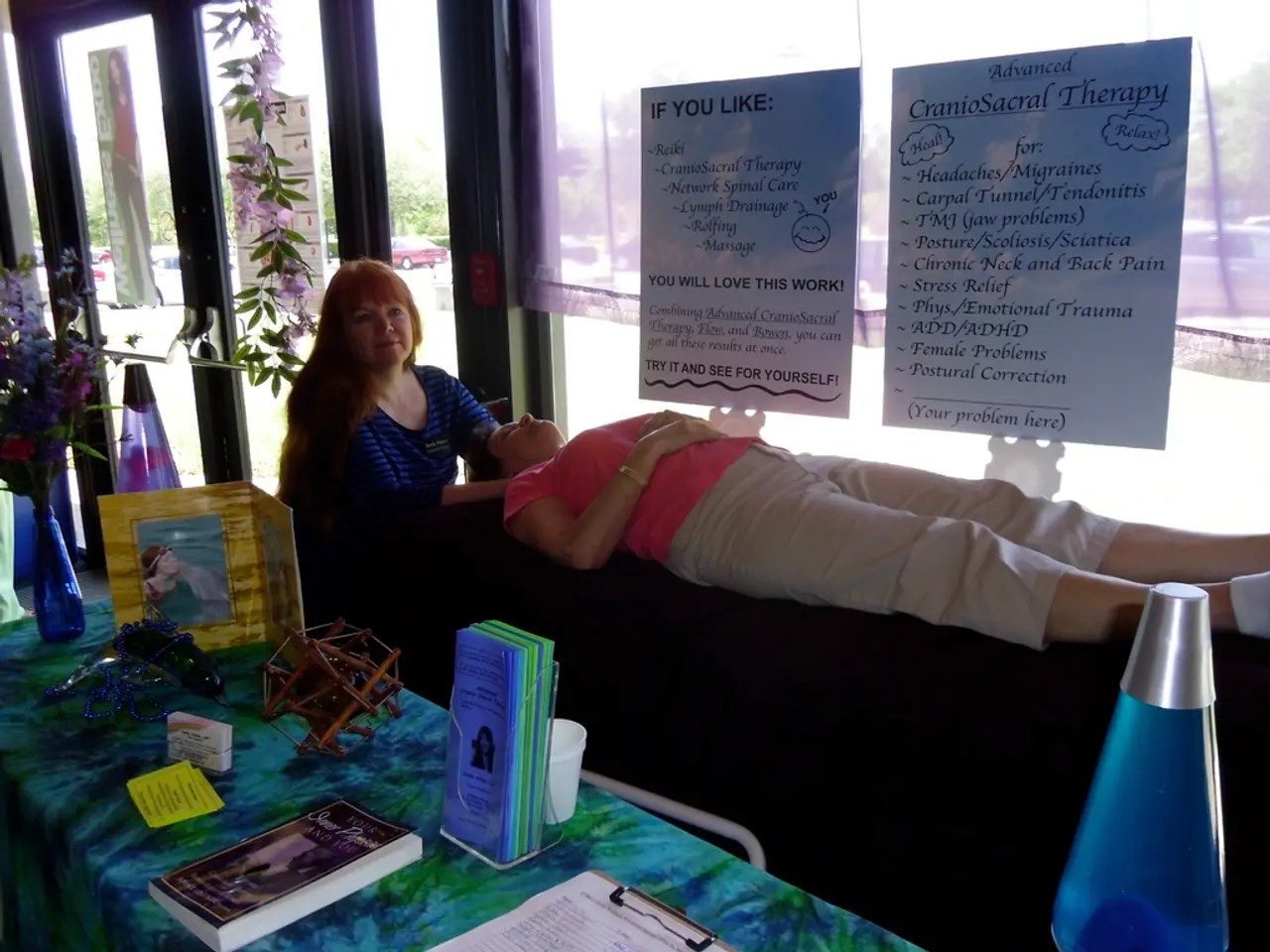Harnessing Brain Waves for Mental Health: The Influence of Transcranial Magnetic Stimulation in Depression Therapy
Transcranial Magnetic Stimulation (TMS) therapy is an innovative treatment for individuals struggling with depression or other mental health conditions. This non-invasive, non-medication treatment uses magnetic fields to stimulate the specific part of the brain known to control mood.
TMS therapy sessions last about 20-30 minutes and do not require anesthesia. The full course of treatment will be five days a week for four to six weeks. Most patients begin to show improvement after two to three weeks, and it can take up to six weeks to achieve maximum benefits.
While TMS therapy is primarily known for its effectiveness in treating depression, it has promising applications in treating a range of psychiatric conditions and neurological disorders. For instance, TMS is being actively researched and applied for conditions such as obsessive-compulsive disorder (OCD), anxiety disorders, post-traumatic stress disorder (PTSD), chronic pain management, and stroke rehabilitation.
In the realm of neurological applications, TMS is being explored for enhancing motor recovery in stroke patients, reducing fatigue and cognitive symptoms in multiple sclerosis, and improving both motor and non-motor symptoms in Parkinson’s disease. Additionally, TMS shows potential in cognitive rehabilitation by targeting brain regions involved in attention and memory.
Advances in personalized TMS protocols, guided by biomarkers and EEG, aim to optimize treatment efficacy for various psychiatric and neurological disorders.
It's important to note that before permitting TMS therapy, your doctor will consider your medical history to ensure it is a safe and effective option for you.
TMS therapy has shown significantly better results than antidepressants, with one in two patients experiencing a 50% reduction in symptoms, and about 30% experiencing full remission. However, rare but possible serious side effects include seizures, hearing problems, and mania, particularly in adolescents with bipolar disorder.
If you're interested in learning more about TMS therapy, consider contacting us for more information. At our platform, providers aim to find a solution that not only alleviates symptoms but helps patients find joy. We accept most major insurances, making this innovative treatment more accessible to a wider audience.
References:
[1] George, A. S., & Daskalakis, Z. J. (2017). Transcranial magnetic stimulation for obsessive-compulsive disorder: A review. Neuropsychiatric Disease and Treatment, 13, 2743–2753.
[2] Pascual-Leone, A., Rothwell, J. C., Hallett, M., & Vallar, G. (1998). Repetitive transcranial magnetic stimulation of the motor cortex modulates the corticospinal excitability in humans. Brain, 121(4), 673–689.
[3] Lefaucheur, J. P., & Pascual-Leone, A. (2006). Transcranial magnetic stimulation in multiple sclerosis. Lancet Neurology, 5(5), 353–360.
[4] Pascual-Leone, A., & Daskalakis, Z. J. (2011). Personalized repetitive transcranial magnetic stimulation: From basic science to clinical practice. Neuron, 70(3), 443–459.
- TMS therapy, a non-medication approach for mental health conditions like depression and bipolar disorder, uses magnetic fields to stimulate the brain's mood-controlling region, offering a promising alternative to traditional depression treatment methods.
- Beyond depression, TMS therapy is being investigated for a variety of psychiatric and neurological disorders, including anxiety disorders, obsessive-compulsive disorder (OCD), post-traumatic stress disorder (PTSD), chronic pain management, stroke rehabilitation, and conditions affecting those with Parkinson’s disease.
- To improve TMS therapy's efficacy, researchers are focusing on personalized protocols guided by biomarkers and EEG, aiming to optimize treatment for a wide range of psychiatric and neurological disorders.
- Although TMS therapy has shown better results than antidepressants for some patients, it's crucial to consider individual medical history before initiation as rare but serious side effects, such as seizures, can occur, particularly in adolescents with bipolar disorder.




